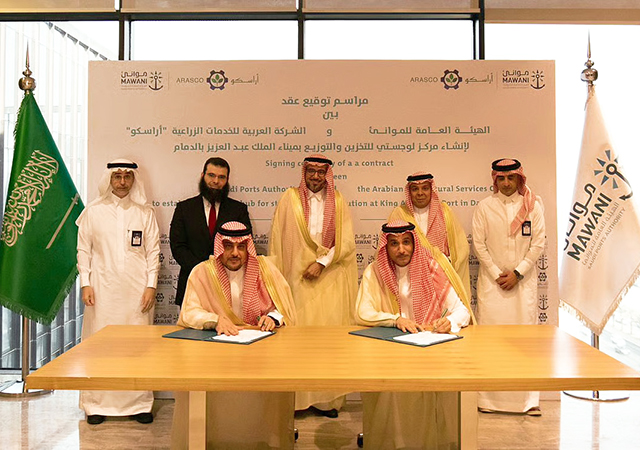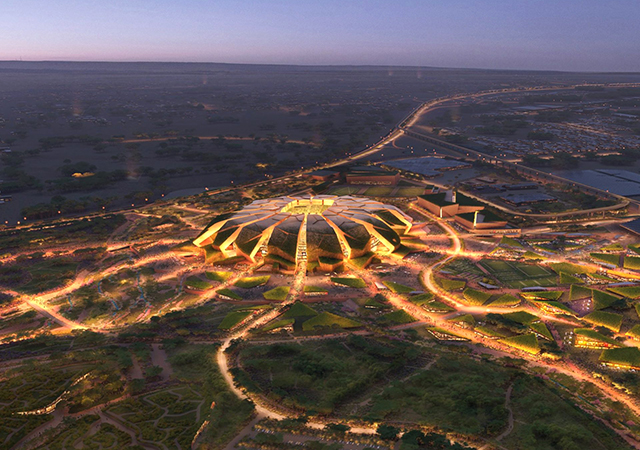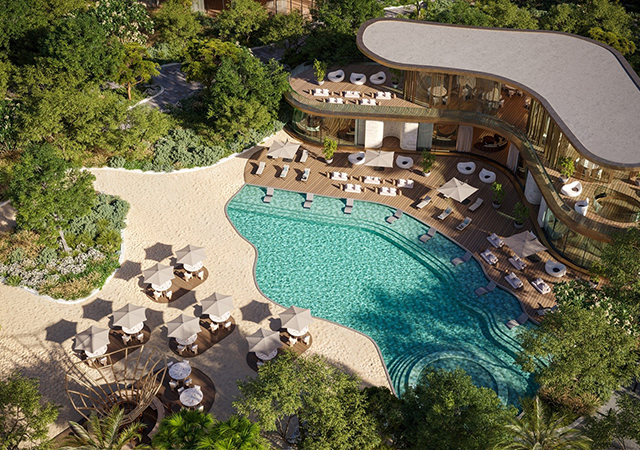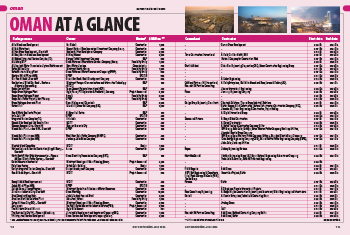
 An artist’s perspective of the $1.3-billion Al Khuwair Downtown and Waterfront Development.
An artist’s perspective of the $1.3-billion Al Khuwair Downtown and Waterfront Development.
Fuelled by a surging economy, a vibrant real estate market, a renewed push for renewable energy, and the launch of a ground-breaking railway project, Oman is poised for a construction upsurge.
The construction industry must now gear itself to keep pace with an anticipated surge in development in the country, which is reported to have a pipeline of planned projects worth over $33 billion.
The sultanate’s economy has been gaining momentum, which has prompted S&P Global Ratings to revise its outlook for the country to positive from stable.
“The positive outlook reflects our view that the government’s balance sheet will strengthen and the economic reform programme could lead to faster-than-expected deleveraging in many state-owned enterprises, without dampening economic growth outcomes. This would strengthen the economy’s resilience to adverse oil price shocks,” says the S&P Global in its overview.
The government’s commitment to fiscal responsibility and economic diversification is laying the foundation for sustainable growth. In line with the Oman Vision 2040 plan, the government is exerting efforts to reduce its reliance on oil and gas by investing in non-hydrocarbon sectors like tourism, transportation, and utilities.
According to Cavendish Maxwell, a leading firm of independent property consultants in the Middle East, the role of real estate and construction, in realising the goals of Oman Vision 2040 is crucial. The sector is a vital player in the economic diversification process, driving growth, and it also impacts other areas that Vision 2040 targets such as Special Economic Zones (SEZs), where building infrastructure is crucial. Here, a law change allows foreign investors who buy property in these zones to get residency visas, making investment more attractive. In building affordable housing, Oman has a law in place to facilitate public-private partnerships (PPPs).
_MoHUP_Neighbourhood Square sml.jpg) |
|
The mega Sultan Haitham City was unveiled last year. |
In terms of propelling tourism numbers, building and expanding hotels and resorts is necessary to accommodate more tourists. This includes integrated tourism complexes and promoting luxury tourism, Cavendish Maxwell points out.
Driving growth in the urban and tourism development sectors are the Ministry of Housing and Urban Planning (MoHUP) and Oman Tourism Development Company (Omran) respectively, each of which is spearheading several projects that continue to attract significant foreign investment. The MoHUP, in fact, has been much in the news recently by actively launching a string of awe-inspiring developments. These include the mega Sultan Haitham City, which was unveiled last year, followed by the $1.3-billion Al Khuwair Downtown and Waterfront Development and $2.4-billion Omani Mountain Destination in quick succession. Omran is developing the massive Madinat Al Irfan (the latest project being the Business Park), Aida and The Sustainable City – Yiti, among others.
These projects are part of the structural plans for Greater Muscat under the Urban Strategy 2040 or Oman National Spatial Strategy 2040 (ONSS), which was approved by HM Sultan Haitham bin Tariq in March 2021 as the essential enabler for the implementation of Oman 2040 Vision and the broad framework to direct urban growth in the sultanate over the next two decades. The plans cover 14 other cities, including Greater Sohar, Greater Salalah and Greater Nizwa.
These ambitious developments promise growing prospects for the construction sector, which is already the largest employer in the private sector. According the Muscat Daily, in 2023, the construction sector contributed RO3.5 billion ($9 billion) to Oman’s GDP – one of the largest contributors to non-oil GDP, accounting for 12.8 per cent of the total volume of non-oil activities in 2023 which was worth RO27.3 billion.
 |
|
The $9-billion OQ8 refinery and oil storage project in Duqm was inaugurated in February this year. |
Development of these projects is largely being carried out in partnership with the private sector, having already attracted regional investors in some of the billion-dollar ventures that have been unveiled recently. The tourism projects, in turn, will necessitate the construction of airport infrastructure, involving the expansion of Muscat International Airport and the development of regional airports – the Chairman of Oman’s Civil Aviation Authority was recently reported to have stated that the sultanate will have six new airports by 2028-29.
In the industrial sector, one of the largest construction projects in Oman that was completed early this year was the $9-billion refinery and oil storage project in Duqm. This project is expected to boost Oman’s economy and reduce its dependence on imported refined petroleum products.
This apart, the sultanate aims to expand its green energy capacity to 1 GW by 2025 and reach 10 GW by the end of the decade. In line with this plan, it is driving substantial investments in solar and wind power projects, and more recently hydrogen potential. The sultanate plans to produce one million tonnes of green hydrogen per year by 2030., with a target to reach 3.75 million tonnes per year by 2040.
 |
|
Construction work has been launched recently on the $384-million Oman Cultural Complex. |
Meanwhile, a landmark project that will not only drive growth in the construction sector but will have a major impact on various economic sectors of the sultanate including trade and industry and increase commercial and investment opportunities for the private sector is the new Omani-Emirati railway network, work on which has just been flagged off.
Railway
Construction work has commenced on the $3-billion Omani-Emirati railway network project, following the award of the civil works contract to a consortium of Trojan Construction Group (NPC) of the UAE and Galfar Engineering and Contracting of Oman.
A joint venture of Siemens and HAC signed another contract for the systems and integration of the railway network to equip the fleet with the latest rail technologies and advancements (see Page 22).
Airports
The sultanate will build six new airports, most of which are expected to be operational by 2028-2029, Naif bin Ali Al Abri, Chairman of the Civil Aviation Authority, was quoted as saying in a report in the Oman Observer.
The new airports are expected to ease access to tourism destinations such as Rass Al Hadd and Salalah, as well as industrial centres like Sohar and Quqm.
According to the report, a site has been chosen for the Musandam Airport, while tenders have been floated for site studies, masterplanning for airports at Jabal Akhdar, Masirah and Sohar.
Meanwhile, Asyad Group, Oman’s global integrated logistics provider, is developing the first phase of Muscat International Airport Free Zone, and has issued tenders for infrastructure works like site clearance and road construction. This zone aims to strengthen air freight logistics in Oman.
According to Asyad Group, the upcoming world-class development will boast state-of-the-art logistics facilities, ready-to-use warehouses and premium land plots.
Power & Water
A number of projects are under way in the renewables sector including solar power plants. Among them is the Manah 1 Solar Plant, a 500-MW solar power plant under construction in Al Dakhiliyah Governorate. France’s EDF Renewables and its consortium partner, Korea Western Power Company (Kowepo) are developing the photovoltaic (PV) solar power plant over a 7.8-sq-km area. The EDF consortium has already inked a sales purchase deal with Nama Power and Water Procurement (PWP). Expected to be operational in 2025, it will provide clean electricity to over 50,000 homes and reduce carbon emissions.
This apart, a 17-MWp solar farm has been commissioned in Sur to power the Sharqiyah Desalination Plant. Developed by global multi-energy company TotalEnergies and French water management specialist Veolia, the solar farm boasts an annual capacity of over 32,000 MWh of green electricity. The project is in line with Oman’s National Energy Strategy, aiming to derive 30 per cent of electricity from renewable sources by 2030, as part of Oman Vision 2040.
In the green hydrogen sector, Hydrogen Oman (Hydrom) announced the winning bidder in the second round of the tendering process for a plant. A consortium comprising Actis, a leading investor in sustainable infrastructure, and Fortescue, an integrated green energy company, will develop the plant which could produce up to 200,000 tonnes of green hydrogen per year. (see Regional News, Page 47).
Meanwhile, Oman Electricity Transmission Company is undertaking $474 million worth of projects to enhance the reliability of the electricity network across Oman under its strategic scheme ‘Rabt’.
Industry
The $9-billion refinery and oil storage project in Duqm, OQ8, a joint venture between OQ and Kuwait Petroleum International, was completed in early 2024. OQ8 expects to process about 230,000 barrels of crude oil per day.
Among the striking industrial projects under way in the sultanate is a $1.3-billion polysilicon factory being built in the Sohar Port and Freezone by United Solar Holding. This will be the largest of its kind in the Middle East and is expected to be operational in 2025. The factory will contribute to Oman’s industrial diversification and reduce solar panel costs.
The zone itself – which is home to various industries from 53 countries – is seeing a growth in industrial investment. n
The total investment in Sohar Freezone in 2023 grew by 30 per cent and land occupancy grew by 19 per cent compared to 2022. With 85 per cent of Phase One fully leased, Phase Two is under way offering a total land area of up to 675 hectares.
Real Estate
In recent years, major real estate developments have been unveiled in the sultanate both by the government and the private sector. Among the most prominent government projects is the Sultan Haitham City, Phase One of which has already been launched by Oman’s Ministry of Housing and Urban Planning. This phase will include over 7,000 residential units, a central park, healthcare facilities, educational institutions, and government buildings.
Strabag, one of the leading construction companies in Europe, is engaged in the preliminary works contract for Phase One (see Page 14).
Another impressive real estate development, unveiled in March, by Ministry of Housing and Urban Planning is Al Khuwair Muscat Downtown and Waterfront Development, which to be set up in the capital at a total investment of $1.3 billion over a 3.3-million-sq-m area (see Page 18).
In line with the country’s tourism ambitions, the sultanate has unveiled plans for the Omani Mountain Destination (OMD), which will take shape in the Jabal Al Akhdar mountain range. This development includes residences, hotels, a health and wellness village, and aims to attract sustainable tourism (see Page 9).
Meanwhile, leading developers in the region such as Dar Global and SEE Holding have joined hands with Omran to capitalise on the sultanate’s scenic property. Dar Global, a leading Saudi-headquartered luxury real estate development company, has kicked off work on the first phase of Aida, a significant urban development in Oman, featuring a mix of mansions, limited-edition villas as well as apartments.
It has recently launched Trump Signature Villas which comprises luxurious villas. This significant launch follows the strategic collaboration between Dar Global and The Trump Organization to develop a signature Trump community within Aida. Located amidst the spectacular Trump International Golf Club Oman golf course, the Trump Villas are an exclusive enclave designed by internationally acclaimed luxury experts.
Aida combines luxury golf, residential, and hospitality elements. One of Oman’s most expansive urban developments, this mixed-use community is situated on the cliffs. The residential component of the development offers an array of luxury limited three- to seven-bedroom villas for sale.
Qurum Stone Development, a leading Omani group, has been appointed as the main contractor for the project coming up over a 3.5-million-sq-m area near Downtown Muscat. Work on Phase One is scheduled to be completed in 2027.
Meanwhile, developers of The Sustainable City – Yiti, a joint venture between Omran and SEE Holding Group are pushing ahead with plans for the development of their net zero development.
Infrastructure work on the project is reported to be 90 per cent complete with the development slated for completion in 2026 (see Gulf Construction, October 2023)
Tourism Facilities
Oman has launched construction work on a $384-million cultural complex in Muscat. This project includes the Oman National Theatre, which boasts a 1,000-seat auditorium and a 250-seat flexible auditorium; the 20,000-sq-m five-storey National Library and the National Archives; an exhibition centre; a cultural centre; and a cinema.
Work on the main building of the complex, which will come up over a 400,000-sq-m area in the Madinat Al Irfan district, is being carried out a consortium of Oman’s Saif Al Harasi and Turkey’s Sembol Construction. The complex is expected to be completed in about three years.
Another tourism focused project is Al Nakheel Integrated Tourism Complex (ITC) project, being spearheaded by Alargan Towell, along the Rumais beach in the Wilayat of Barka.
The project is aligned with the Omani Ministry of Heritage and Tourism’s strategy to develop ITCs in partnership with the private sector. A significant 78 per cent of Al Nakheel’s vast expanse is dedicated to The Crystal Lagoon, extensive parks, and lush landscaping, while 22 per cent of the project will be devoted to buildings.
Work is already under way at the Al Nakheel ITC. Currently, the focus is on the intricate earthwork required for the development of roadways and land levelling.






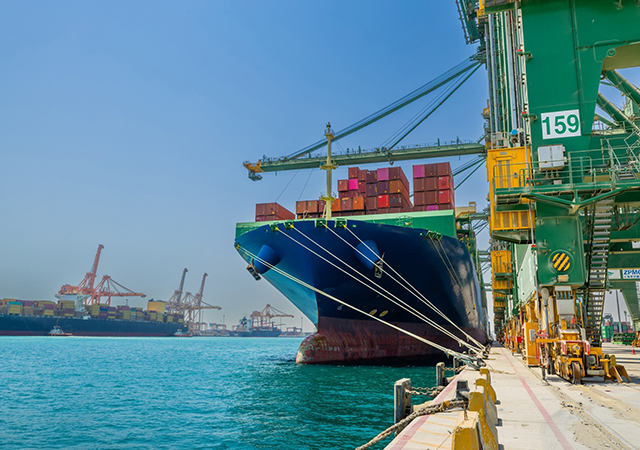
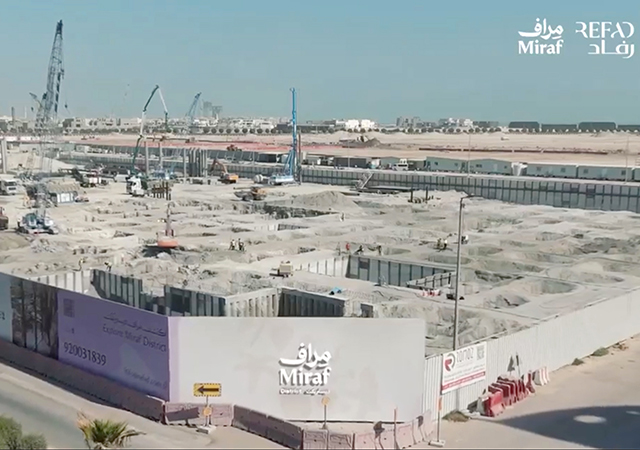
.jpg)




.jpg)

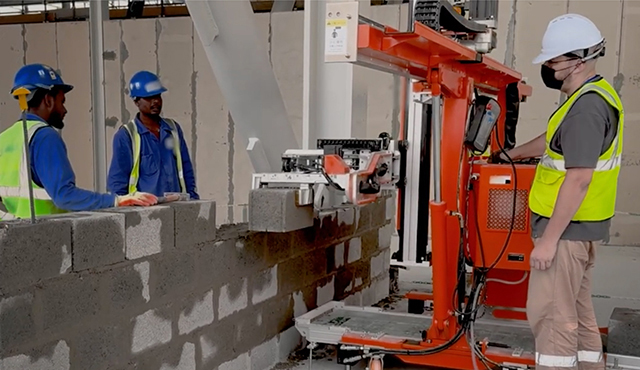





















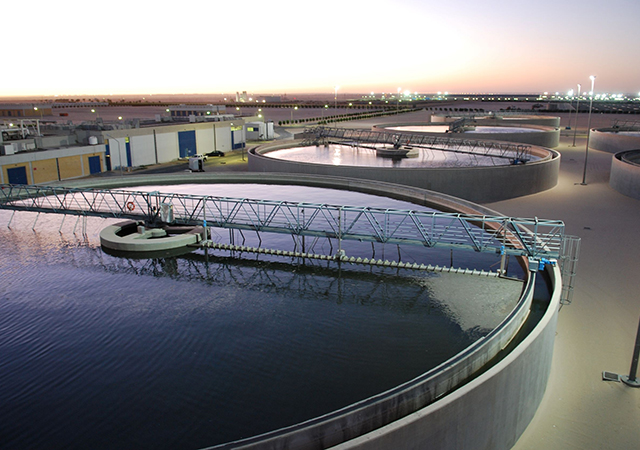


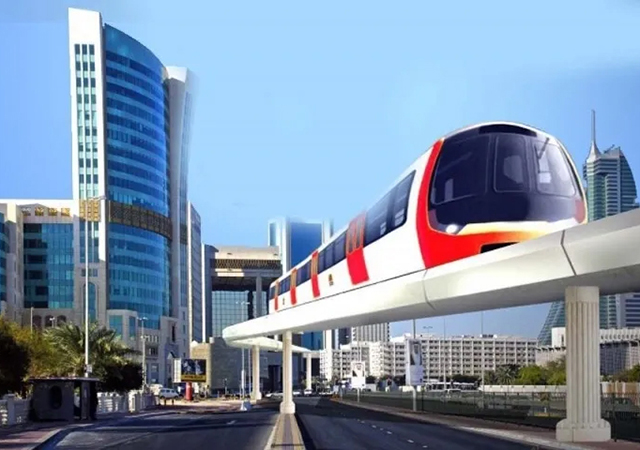

.jpg)




